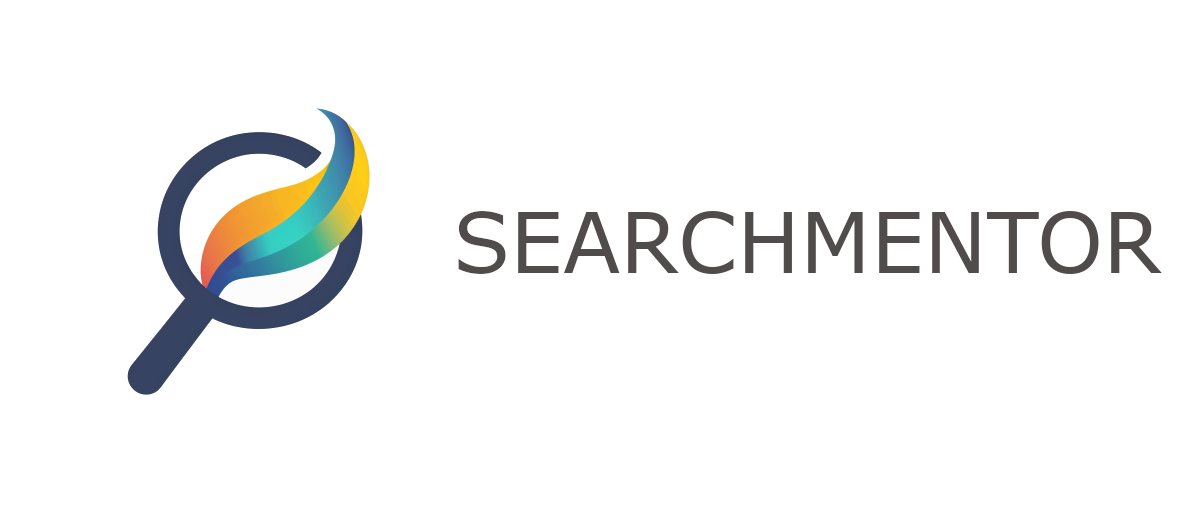Transform your workspace into a sensory-rich environment to boost productivity and well-being. By incorporating elements that stimulate multiple senses, you create a dynamic and engaging work area that enhances focus, creativity, and satisfaction. This guide explores how to design a sensory-enhanced workspace and the benefits it offers for improving your work experience.
Embrace Calming Aromas
Introduce essential oils or scented candles to cultivate a soothing atmosphere in your workspace. Aromas such as lavender and eucalyptus are known for their stress-reducing and concentration-enhancing properties. By selecting scents that invigorate and inspire you, you can create a pleasant environment that elevates your mood and boosts productivity. Lavender promotes relaxation and calm, while eucalyptus can invigorate and clear the mind. Tailoring your workspace’s aroma to your personal preferences helps create a more enjoyable and effective work setting, contributing to a better overall work experience and enhanced focus throughout the day.
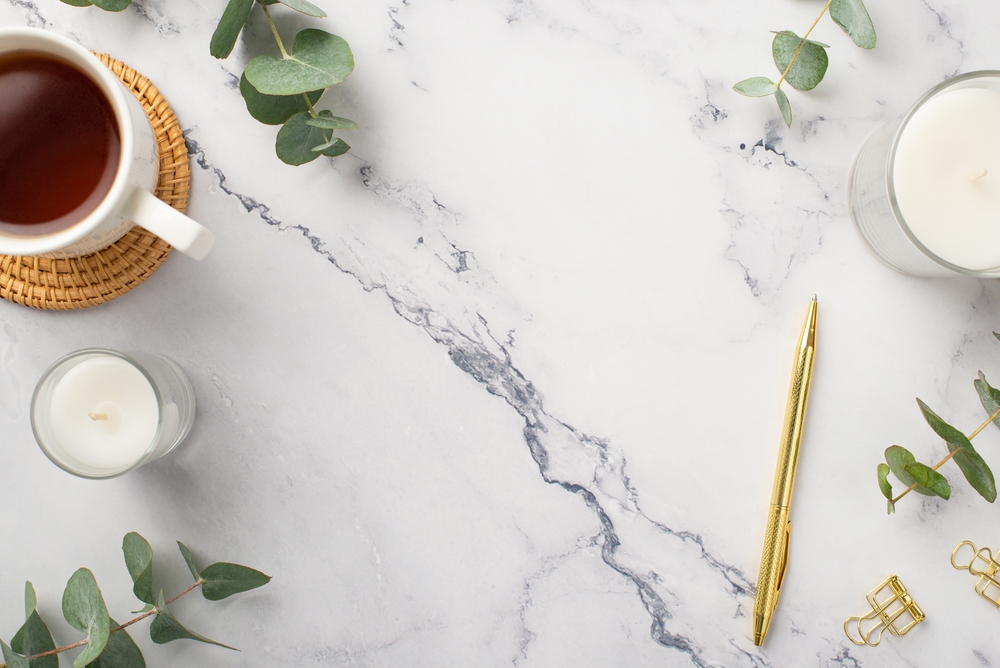
Integrate Soothing Soundscapes
Incorporate background sounds such as white noise, nature sounds, or instrumental music into your workspace. These auditory elements can effectively mask distractions, promote relaxation, and boost focus. By choosing a well-suited soundscape, you create an environment that enhances concentration and productivity. White noise can help drown out interruptions, while nature sounds and calming instrumental music can create a soothing atmosphere that reduces stress. Tailoring your auditory environment to your personal preferences can transform your workspace into a sanctuary of productivity, making it easier to stay engaged and efficient throughout the day. Experiment with different sounds to find what best supports your work and well-being.
Optimize Lighting for Mood and Function
Select lighting that balances functionality with mood enhancement to create an ideal work environment. Incorporate natural light whenever possible, as it boosts mood and energy while reducing eye strain. Complement this with soft ambient lighting to maintain a comfortable atmosphere and adjustable task lighting for focused work. This combination helps reduce eye fatigue and creates a visually pleasant space. Proper lighting design not only enhances productivity by improving focus and reducing discomfort but also positively influences your mood and overall energy levels, making your workspace more inviting and effective.
Add Textures for Comfort and Inspiration
Include a variety of textures in your workspace to enhance both comfort and creativity. Incorporate elements such as a plush rug, an ergonomic chair, and tactile wall art. Different textures provide sensory experiences that can improve physical comfort and stimulate inspiration. A plush rug underfoot can create a cozy environment, while an ergonomic chair supports long hours of work. Tactile wall art adds visual and textural interest, sparking creativity. Experiment with materials that not only look appealing but also feel pleasant to the touch, ensuring your workspace is both aesthetically pleasing and supportive of your well-being.
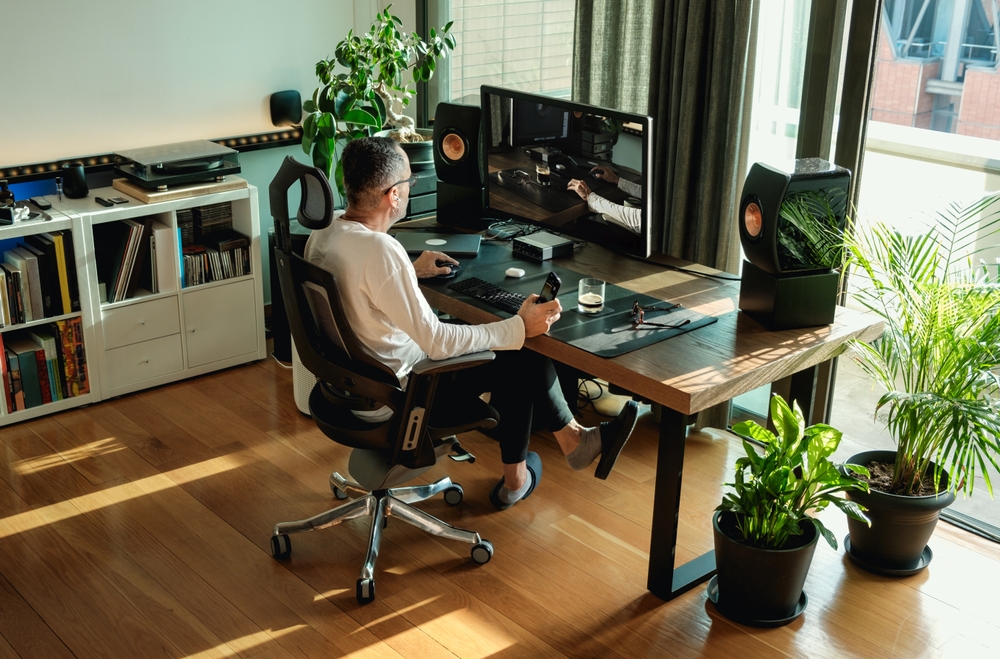
Use Color Psychology to Influence Mood
Incorporate colors into your workspace that positively affect your mood and energy levels. For example, blue tones are known to promote calm and focus, creating a serene environment conducive to concentration. In contrast, yellow hues can boost creativity and optimism, infusing your workspace with energy and motivation. Thoughtfully selecting colors for your walls, furniture, or decor can significantly influence your emotional responses and productivity. By choosing colors that align with your work goals and personal preferences, you create a more effective and inspiring workspace, enhancing both your well-being and performance.
Personalize with Inspiring Visuals
Decorate your workspace with art, photographs, or vision boards that inspire and motivate you. Including visual stimuli that resonate with your personal goals and interests can significantly enhance creativity and drive. Art pieces, cherished photos, and vision boards create a stimulating environment that keeps you focused and inspired. By surrounding yourself with images and objects that reflect your aspirations, you transform your workspace into a source of continual motivation and positivity, which can lead to increased productivity and a more fulfilling work experience.
Incorporate Plants for Freshness and Vitality
Add indoor plants to bring a touch of nature into your workspace. Plants enhance air quality, infuse the space with tranquility, and boost your mood. The presence of greenery creates a refreshing environment that promotes well-being and productivity. Incorporating plants not only improves the aesthetic appeal of your workspace but also provides a calming effect, reducing stress and increasing focus. Choose low-maintenance varieties that fit your workspace size and lighting conditions to effortlessly integrate nature into your daily work routine.
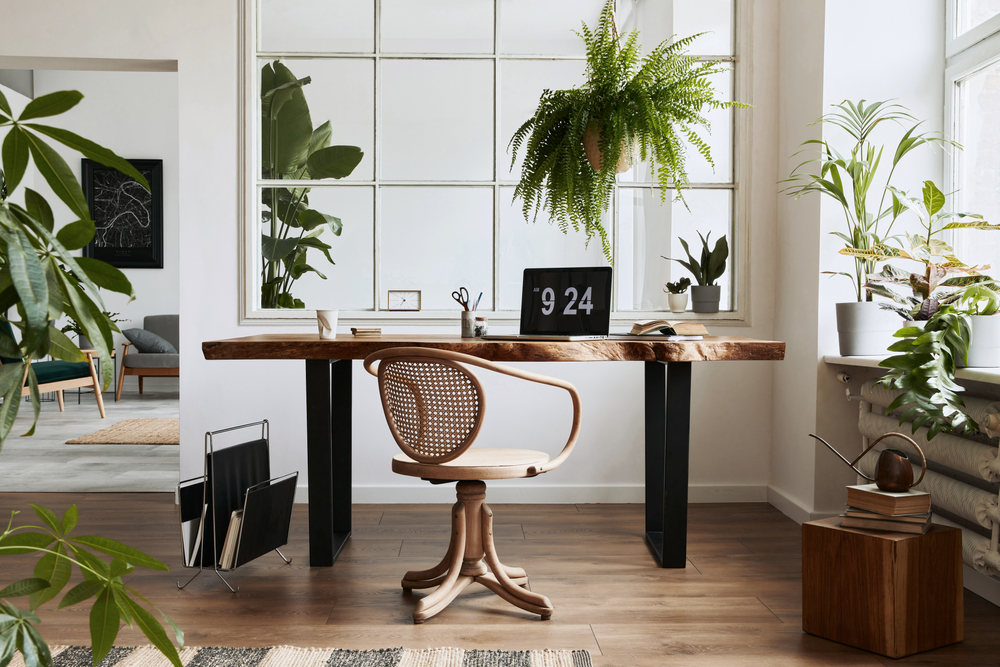
Invest in Ergonomic Furniture
Choose ergonomic furniture to support your physical well-being and enhance productivity. An adjustable chair, a desk with the correct height, and keyboard trays can prevent discomfort and improve your focus. Ergonomic design is crucial as it helps maintain proper posture and reduces the risk of strain or injury. By investing in furniture that promotes comfort and aligns with your body’s needs, you create a more efficient and enjoyable workspace. Prioritizing ergonomic principles not only boosts productivity but also contributes to long-term health and comfort during extended work hours.
Create a Dynamic Workspace Layout
Design a workspace layout that encourages movement and flexibility to enhance productivity and well-being. Incorporate standing desks or adjustable workstations to allow for different working positions throughout the day. Additionally, create designated areas for stretching or light exercise to promote physical activity and reduce fatigue. A dynamic layout not only helps in breaking the monotony of prolonged sitting but also fosters a more engaging and energizing work environment. By integrating these elements, you can improve comfort, boost energy levels, and maintain a higher level of productivity throughout the day.
Integrate Interactive Elements
Include interactive elements such as a whiteboard for brainstorming or a tactile stress ball in your workspace. These additions offer valuable mental breaks, aid in idea generation, and provide physical outlets for stress. A whiteboard allows you to visually organize thoughts and collaborate on projects, while a stress ball helps relieve tension and keep your hands engaged. Incorporating these interactive tools can create a more dynamic and engaging work environment, enhancing creativity, focus, and overall job satisfaction. By integrating elements that stimulate both mental and physical activity, you foster a workspace that supports both productivity and well-being.
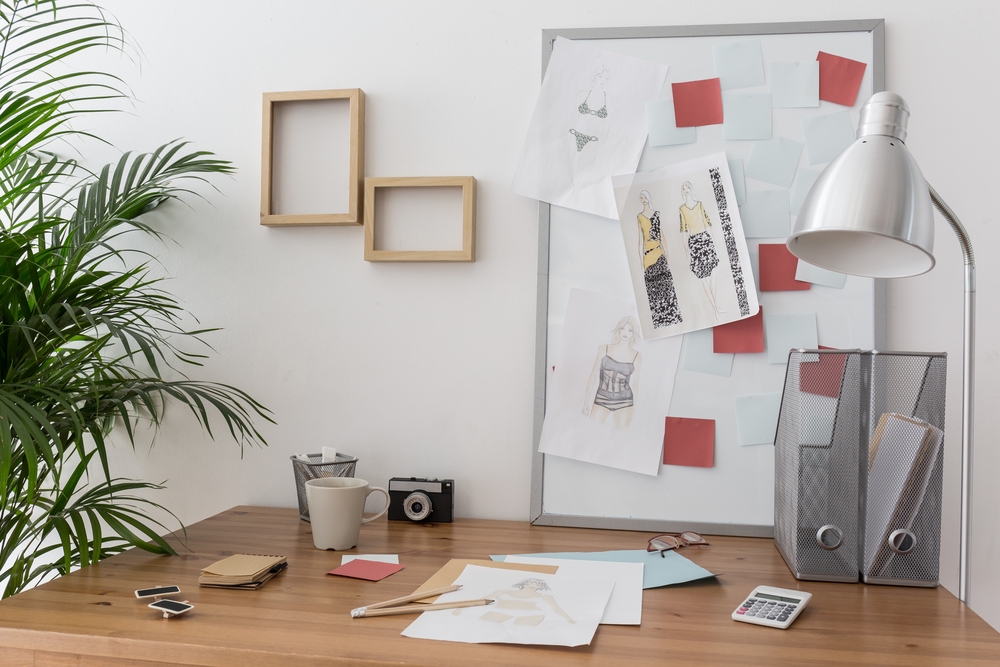
Foster a Sense of Tranquility with Minimalist Design
Balance sensory stimulation with minimalist design principles to avoid overwhelming your senses. A clean and organized workspace, combined with carefully selected sensory enhancements, creates a harmonious environment that fosters both focus and creativity. While sensory elements like soothing sounds or calming scents can enhance your work experience, maintaining a clutter-free space ensures that these stimuli do not become distractions. By blending a minimalist approach with thoughtful sensory design, you can cultivate an environment that is both inspiring and conducive to productivity, promoting a clear, focused mind and an innovative spirit.
Conclusion
Creating a sensory-enhanced workspace involves designing an environment that engages multiple senses, promoting increased productivity and well-being. By incorporating elements that stimulate sight, sound, smell, touch, and movement, you can elevate your work experience and achieve a higher level of focus and satisfaction. Embrace these strategies to transform your workspace into a dynamic and inspiring haven for creativity and efficiency.

